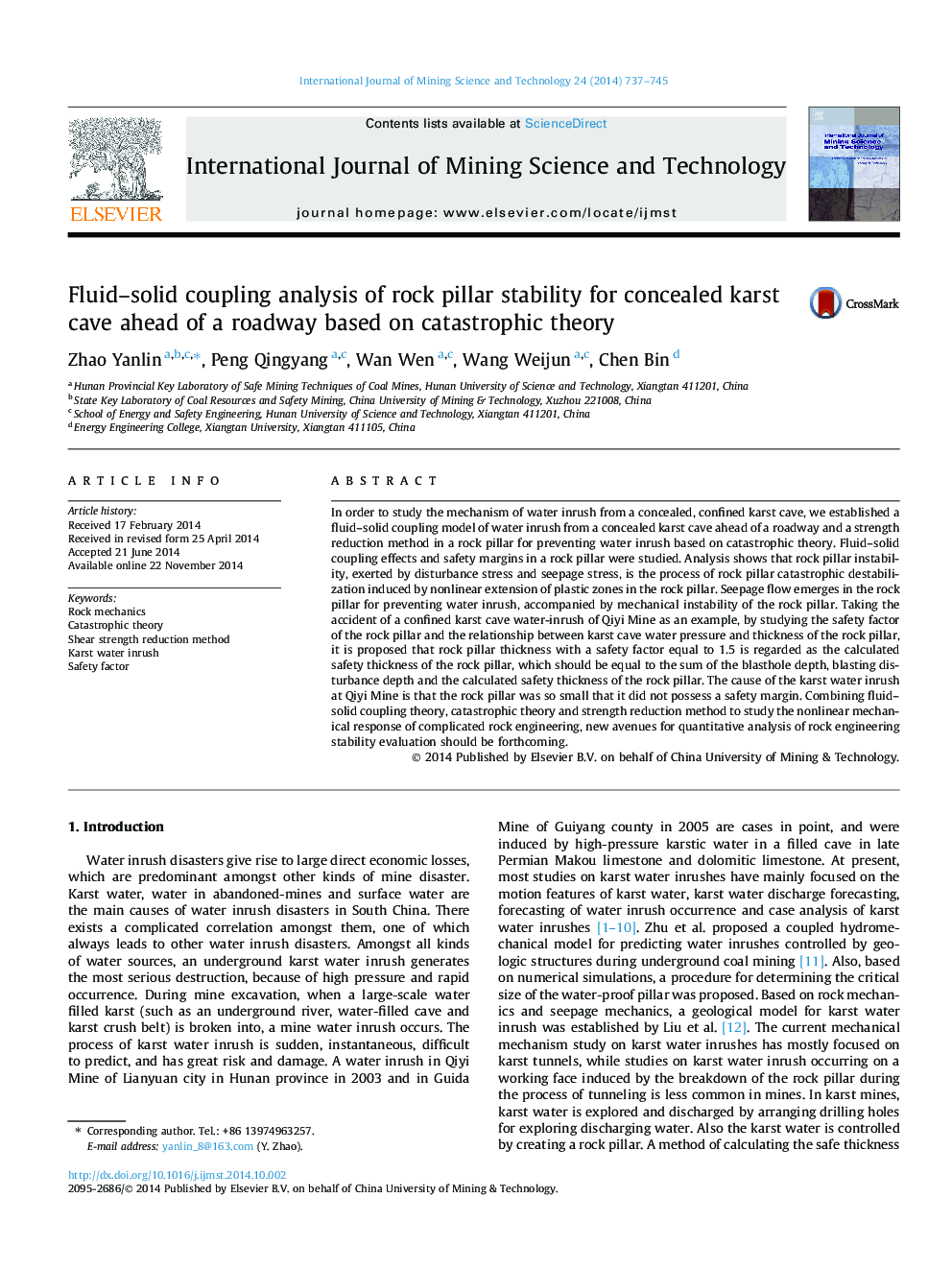| Article ID | Journal | Published Year | Pages | File Type |
|---|---|---|---|---|
| 275431 | International Journal of Mining Science and Technology | 2014 | 9 Pages |
In order to study the mechanism of water inrush from a concealed, confined karst cave, we established a fluid–solid coupling model of water inrush from a concealed karst cave ahead of a roadway and a strength reduction method in a rock pillar for preventing water inrush based on catastrophic theory. Fluid–solid coupling effects and safety margins in a rock pillar were studied. Analysis shows that rock pillar instability, exerted by disturbance stress and seepage stress, is the process of rock pillar catastrophic destabilization induced by nonlinear extension of plastic zones in the rock pillar. Seepage flow emerges in the rock pillar for preventing water inrush, accompanied by mechanical instability of the rock pillar. Taking the accident of a confined karst cave water-inrush of Qiyi Mine as an example, by studying the safety factor of the rock pillar and the relationship between karst cave water pressure and thickness of the rock pillar, it is proposed that rock pillar thickness with a safety factor equal to 1.5 is regarded as the calculated safety thickness of the rock pillar, which should be equal to the sum of the blasthole depth, blasting disturbance depth and the calculated safety thickness of the rock pillar. The cause of the karst water inrush at Qiyi Mine is that the rock pillar was so small that it did not possess a safety margin. Combining fluid–solid coupling theory, catastrophic theory and strength reduction method to study the nonlinear mechanical response of complicated rock engineering, new avenues for quantitative analysis of rock engineering stability evaluation should be forthcoming.
